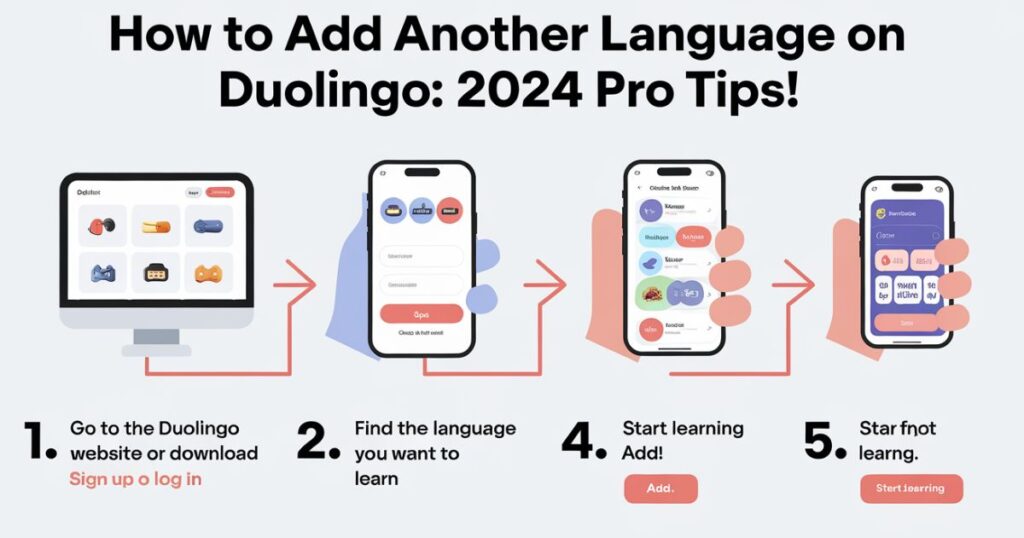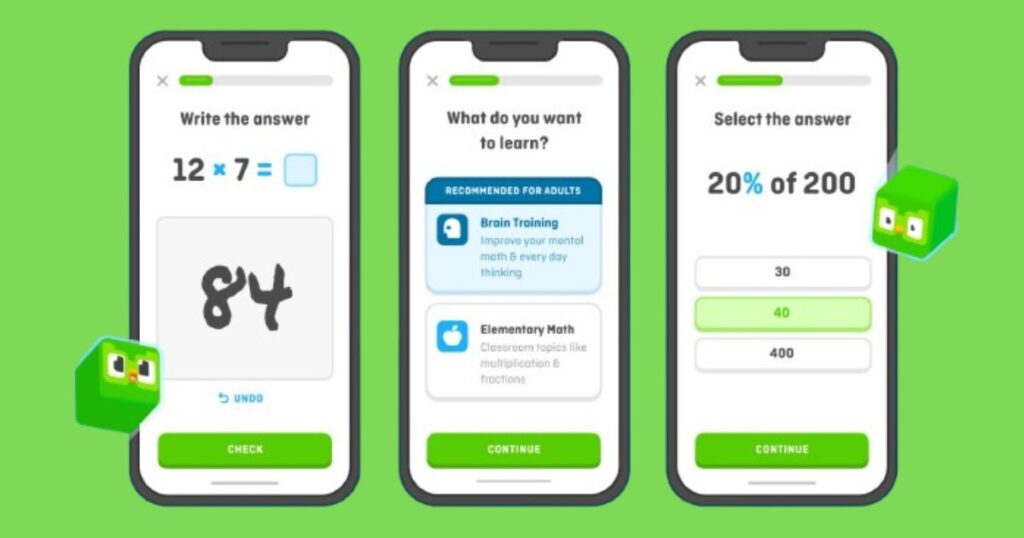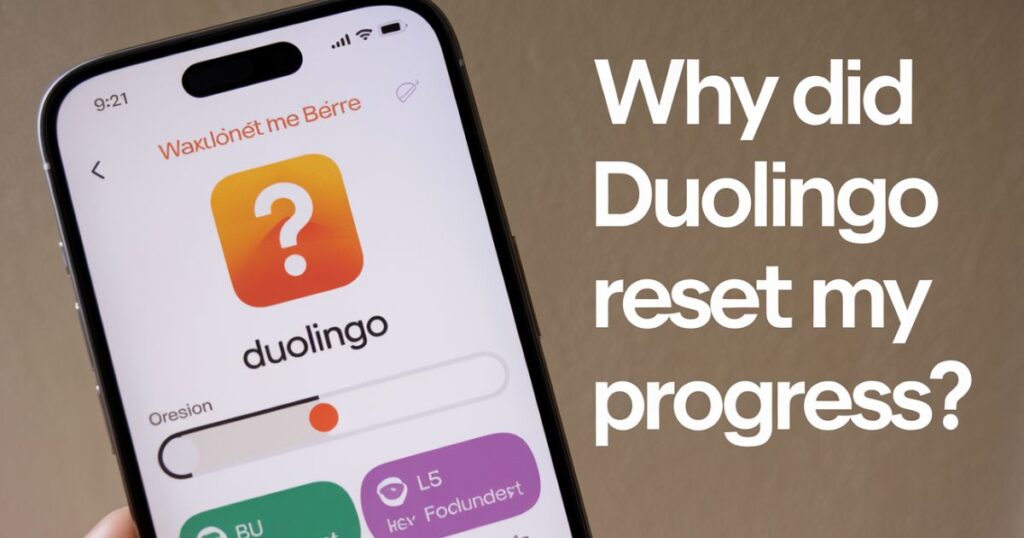Learning a new language can be challenging enough without technical issues getting in your way. With over 500 million users worldwide relying on Duolingo for their daily language practice, it’s frustrating when the app doesn’t work as expected.
Whether you’re maintaining a 500-day streak or just starting your language journey, this comprehensive guide will help you resolve any technical hurdles you encounter with the platform.
Critical Duolingo App Issues & Instant Solutions

App Performance Problems
When your Duolingo app crashes or freezes, it’s often due to underlying system issues that can be quickly resolved. Most users experience crashes during lesson transitions or when attempting to access new content. The primary culprit is usually insufficient device resources or conflicting background processes.
Start by force closing the app and checking your device’s available RAM. Modern smartphones typically need at least 2GB of free RAM for optimal app performance. If you’re running multiple apps simultaneously, consider closing unnecessary background applications. Many users don’t realize that having dozens of tabs open in their browser can impact Duolingo’s performance, even on high-end devices.
Battery-saving mode can also cause unexpected behavior. These power-saving features often restrict background processes and network connectivity, leading to synchronization issues. Try disabling battery optimization specifically for Duolingo in your device settings.
Connection Error Solutions
Internet connectivity issues are the most common cause of Duolingo malfunctions. The app requires a stable internet connection to sync progress, download new lessons, and update course content. While the app offers offline functionality, many features still depend on reliable internet access.
Modern language learning platforms like Duolingo typically require a minimum connection speed of 1-2 Mbps for smooth operation. However, stability is often more important than raw speed. A consistent 3G connection usually works better than an unstable 5G signal.
When troubleshooting connection issues, consider these often-overlooked factors:
Network congestion during peak hours can cause timeouts and sync failures. Try accessing the app during off-peak hours if you’re experiencing persistent connectivity problems. Public WiFi networks, especially those requiring web authentication, can interfere with Duolingo’s operation. The app may appear connected but fail to communicate properly with Duolingo’s servers.
Protecting Your Learning Streak
Streak loss represents one of the most demotivating technical issues for dedicated language learners. Your streak is more than just a number – it’s a reflection of your commitment to daily learning. Understanding how streaks work can help prevent unnecessary losses.
Duolingo’s streak system operates on a 24-hour cycle based on your local timezone. However, many users don’t realize that traveling across time zones can affect streak calculations. When traveling, complete your lessons early in the day to avoid timezone-related streak losses.
The Streak Freeze feature acts as insurance against missed days, but it must be activated before you miss a day. Consider maintaining multiple Streak Freezes as backup, especially if you rely on potentially unstable internet connections.
More Post: Can You Learn More Than One Language On Duolingo?: IN 2024
Core Technical Problems Duolingo & Root Causes
Device-Specific Challenges
Different operating systems handle Duolingo differently, leading to platform-specific issues that require targeted solutions. iOS users often encounter problems with background app refresh and push notifications, while Android users more frequently face app compatibility challenges due to the diverse ecosystem of devices and OS versions.
iOS-specific considerations include optimization for newer devices and features like widgets and app clips. The iOS version of Duolingo typically receives updates first, but this can sometimes lead to temporary incompatibilities with older devices running legacy iOS versions.
Android users benefit from more flexible installation options but may encounter fragmentation issues. The app needs to support thousands of different device configurations, which can lead to device-specific bugs that don’t affect the broader user base.
Storage Impact Analysis
Storage management plays a crucial role in Duolingo’s performance. The app regularly downloads new content and updates, requiring both sufficient storage space and proper storage management. Users often overlook the impact of fragmented storage on app performance.
A cluttered device with less than 10% free storage space typically experiences slower lesson loading times and more frequent crashes. The app’s cache can grow significantly over time, especially for users who practice multiple languages or use features like Stories and Audio Lessons.
System Integration and Performance
Modern versions of Duolingo integrate deeply with system features like notification systems, background processing, and system audio. This integration can sometimes lead to conflicts with other apps or system settings. Understanding these interactions helps in maintaining optimal performance.
Users should pay particular attention to system-level permissions. Duolingo requires various permissions to function properly, including microphone access for speaking exercises, storage access for offline lessons, and notification permissions for reminders.
More Post: How to Add a Language On Duolingo?:Complete Guide
Account & Progress Solutions
XP Recording and Progress Tracking
Experience points (XP) form the backbone of Duolingo’s progression system. When progress isn’t saving correctly, it can derail your learning momentum. Progress synchronization issues often stem from network interruptions during crucial save points.
The app employs a sophisticated caching system to prevent progress loss, but this system can sometimes fail during network transitions. Understanding how to manually trigger synchronization can help prevent progress loss during unstable connections.
Crown Level and Course Progression
The crown system represents your mastery of specific skills. When lessons aren’t progressing properly, it’s often due to backend synchronization issues rather than user error. Complex course algorithms determine when you should level up, but technical issues can interrupt this process.
Plus subscribers sometimes encounter unique progression issues related to their subscription status. These problems typically resolve automatically once subscription verification completes, but knowing how to manually verify your subscription status can save time.
Network & Connectivity Deep Dive
Understanding Offline Functionality
While Duolingo offers offline learning capabilities, many users don’t fully understand how to maximize this feature. The offline mode needs proper setup before you find yourself without internet access. Taking time to configure offline lessons can prevent frustrating interruptions to your learning routine.
The app typically stores about two weeks’ worth of lessons offline, consuming approximately 50-100MB of storage space per language. This storage allocation varies based on your progress level and course complexity. Japanese and Chinese courses, for example, require more storage due to character sets and audio files.
Data Usage and Optimization
Modern language learning apps like Duolingo consume significant data, especially when downloading new content or streaming audio lessons. Understanding your app’s data consumption patterns helps optimize your learning experience, particularly if you’re on a limited data plan.
Here’s a real-world breakdown of Duolingo’s data usage:
| Activity Type | Approximate Data Usage | Monthly Estimate |
| Regular Lessons | 2-5MB per lesson | 150-300MB |
| Stories | 3-4MB per story | 100-200MB |
| Audio Lessons | 5-10MB per lesson | 200-400MB |
| Background Sync | 1-2MB daily | 30-60MB |
Professional Support and Advanced Solutions
Maximizing Support Resources
When facing persistent technical issues, knowing how to effectively communicate with Duolingo’s support team can significantly speed up resolution times. The support team handles thousands of requests daily, so providing comprehensive information in your initial contact makes a substantial difference.
Support tickets should include:
- Detailed description of the issue
- Screenshots or screen recordings
- Device specifications
- Recent app changes or updates
- Account details (username, email)
- Time and date of incidents
Community-Driven Solutions
The Duolingo community often discovers creative solutions to common problems before they’re officially addressed. The language forums and discussion boards serve as valuable resources for troubleshooting unique issues. Many experienced users share advanced tips and workarounds that aren’t documented in official support materials.
More Post: What Kind of Spanish Does Duolingo Teach ?: A Complete Guide
Preventive Maintenance and Optimization
Creating a Maintenance Schedule
Implementing a regular maintenance routine prevents many common technical issues before they impact your learning. This proactive approach is particularly important for long-term learners who’ve accumulated significant progress and customizations.
A monthly maintenance checklist might include:
- Reviewing and adjusting notification settings
- Checking for pending updates
- Clearing unnecessary cache data
- Verifying backup settings
- Testing offline mode functionality
- Reviewing device storage allocation
Performance Monitoring and Optimization
Understanding your device’s performance metrics helps identify potential issues before they become critical. Most modern devices provide built-in tools for monitoring app performance and resource usage. Learning to use these tools effectively can help maintain optimal app performance.
Alternative Learning Strategies
Backup Learning Plans
When Duolingo isn’t working, having alternative learning methods ready ensures continuous progress. While waiting for technical issues to resolve, consider these complementary learning approaches:
Interactive websites often offer free grammar exercises and vocabulary drills that align well with Duolingo’s curriculum. Podcasts designed for language learners provide excellent listening practice and cultural context. Language exchange apps can connect you with native speakers for conversation practice.
Cross-Platform Integration
Many users don’t realize that Duolingo offers different features across its web and mobile platforms. The web version often provides more detailed grammar explanations and keyboard shortcuts, while the mobile app excels at quick practice sessions and offline learning.
Future-Proofing Your Language Learning
Staying Updated with Platform Changes
Duolingo regularly introduces new features and learning mechanisms through A/B testing. Understanding these changes helps you adapt your learning strategy and troubleshoot new issues as they arise. The platform’s evolution often brings improvements but can temporarily disrupt established learning patterns.
Building Learning Resilience
Technical issues shouldn’t derail your language learning journey. Developing a resilient approach to learning helps maintain progress despite occasional platform disruptions. This includes:
- Maintaining offline resources
- Developing multiple learning habits
- Creating backup progress records
- Building a support network of fellow learners
FAQ’s About Duolingo Issues
Is there a problem with Duolingo today?
Duolingo occasionally experiences server outages affecting multiple users. Check Duolingo’s status page or Twitter for current service disruptions. You can also try the website version if the app isn’t working.
Why is Duolingo suddenly not working?
Common causes include poor internet connection, outdated app version, device storage issues, or server maintenance. Most sudden issues resolve by restarting the app or checking your internet connection.
What is the problem with Duolingo?
Typical Duolingo problems include app crashes, lesson loading failures, audio issues, or progress not saving. These usually stem from device compatibility, internet connectivity, or server-side problems.
What to do if Duolingo isn’t loading?
First check your internet connection, then clear the app’s cache. If problems persist, try force-stopping the app, restarting your device, or reinstalling Duolingo completely.
Conclusion
Successfully resolving Duolingo not working issues requires understanding both technical and learning aspects of the platform. By implementing the strategies and solutions outlined in this guide, you can minimize disruptions to your language learning journey and maintain steady progress toward your goals.
Remember that technical issues are temporary, but your commitment to learning remains constant. Keep this guide bookmarked for quick reference, and don’t let technical hurdles prevent you from achieving your language learning objectives.
“The key to successful language learning isn’t just about having the right tools, but knowing how to maintain and troubleshoot them effectively.“
For the latest updates and advanced troubleshooting techniques, regularly check Duolingo’s official support channels and community forums. The language learning community continues to discover and share new solutions as the platform evolves.

Welcome to DuolingoAbout.com! Your go-to hub for expert tips, tricks, and guides to mastering Duolingo. Simplify your language-learning journey with curated content designed for learners at all levels.






